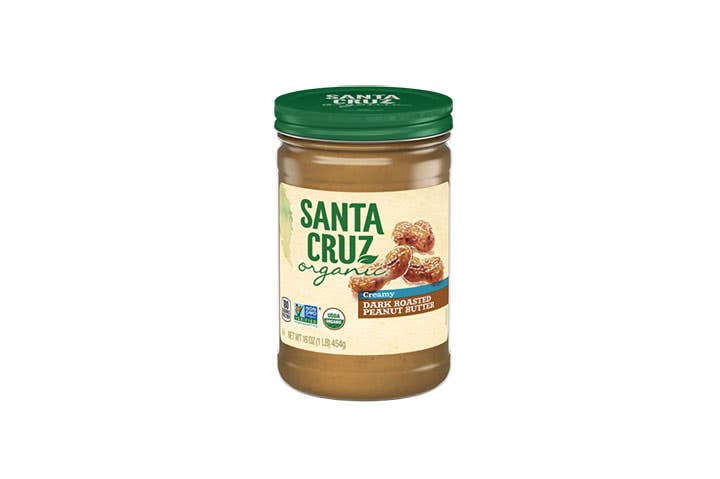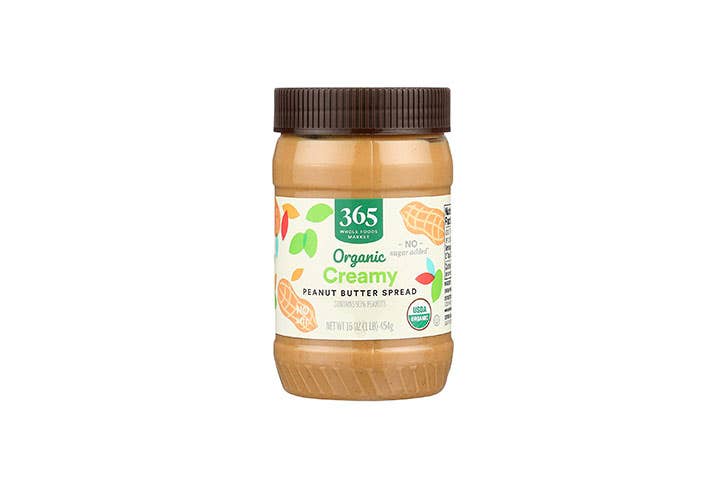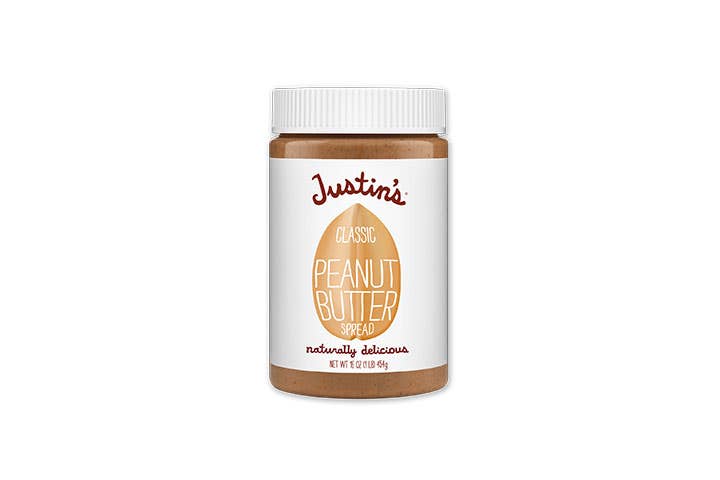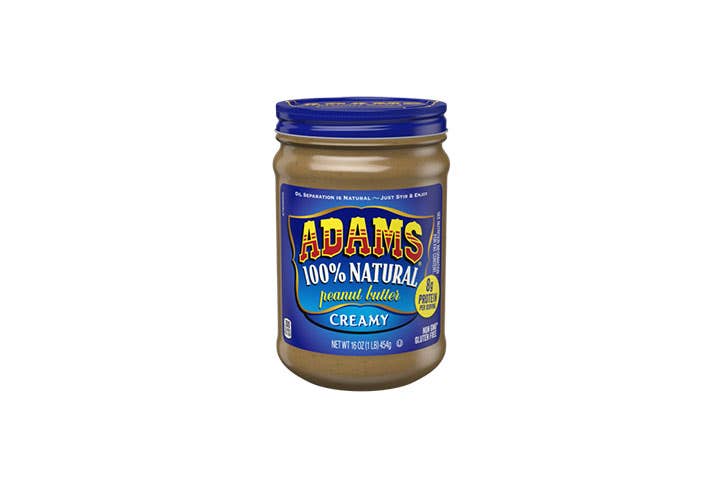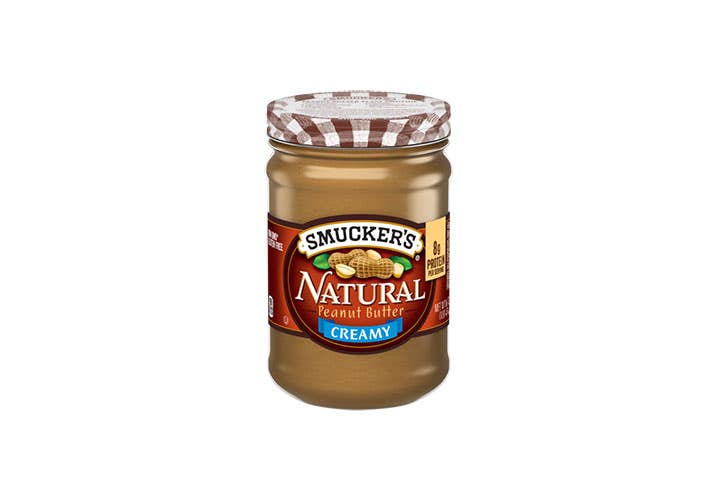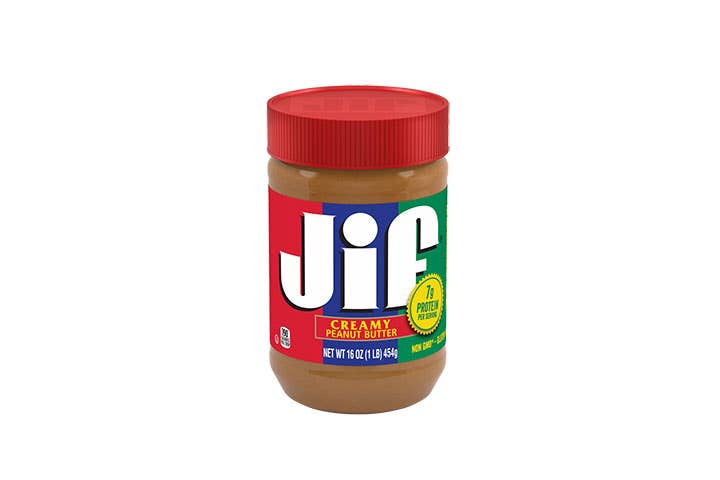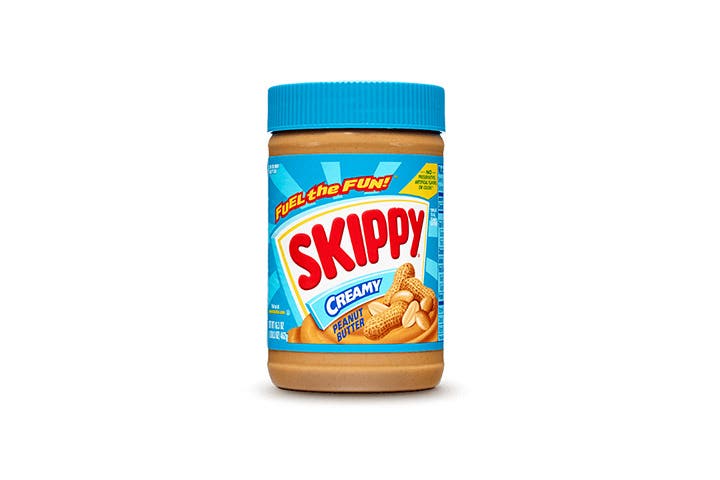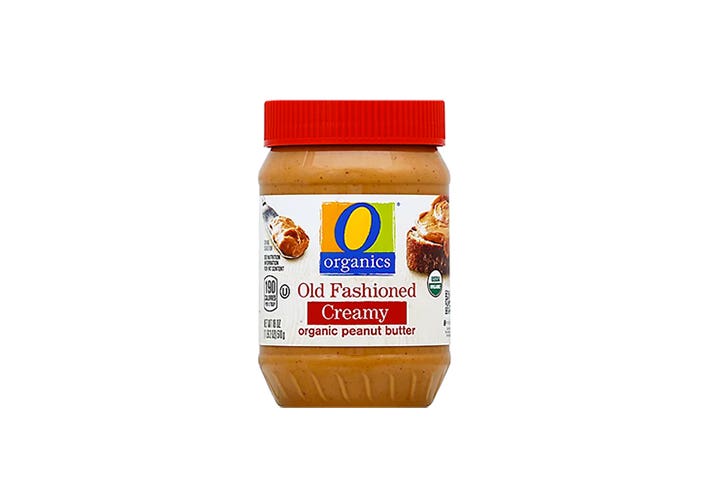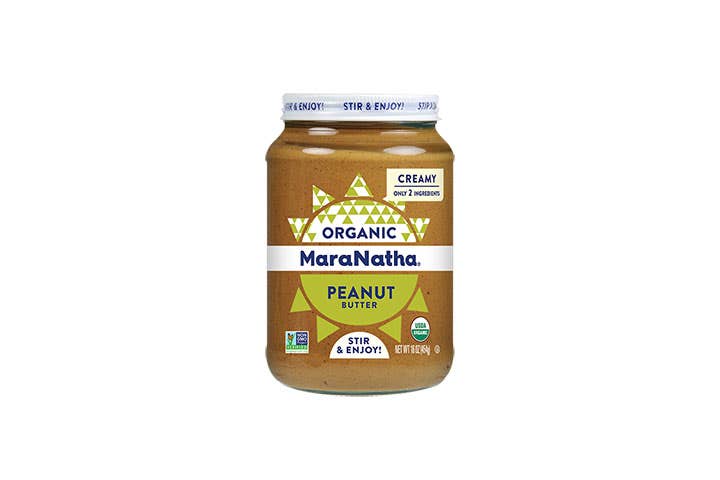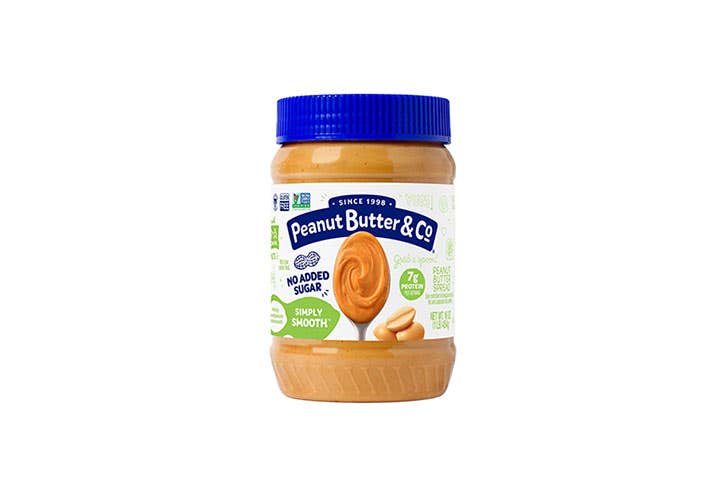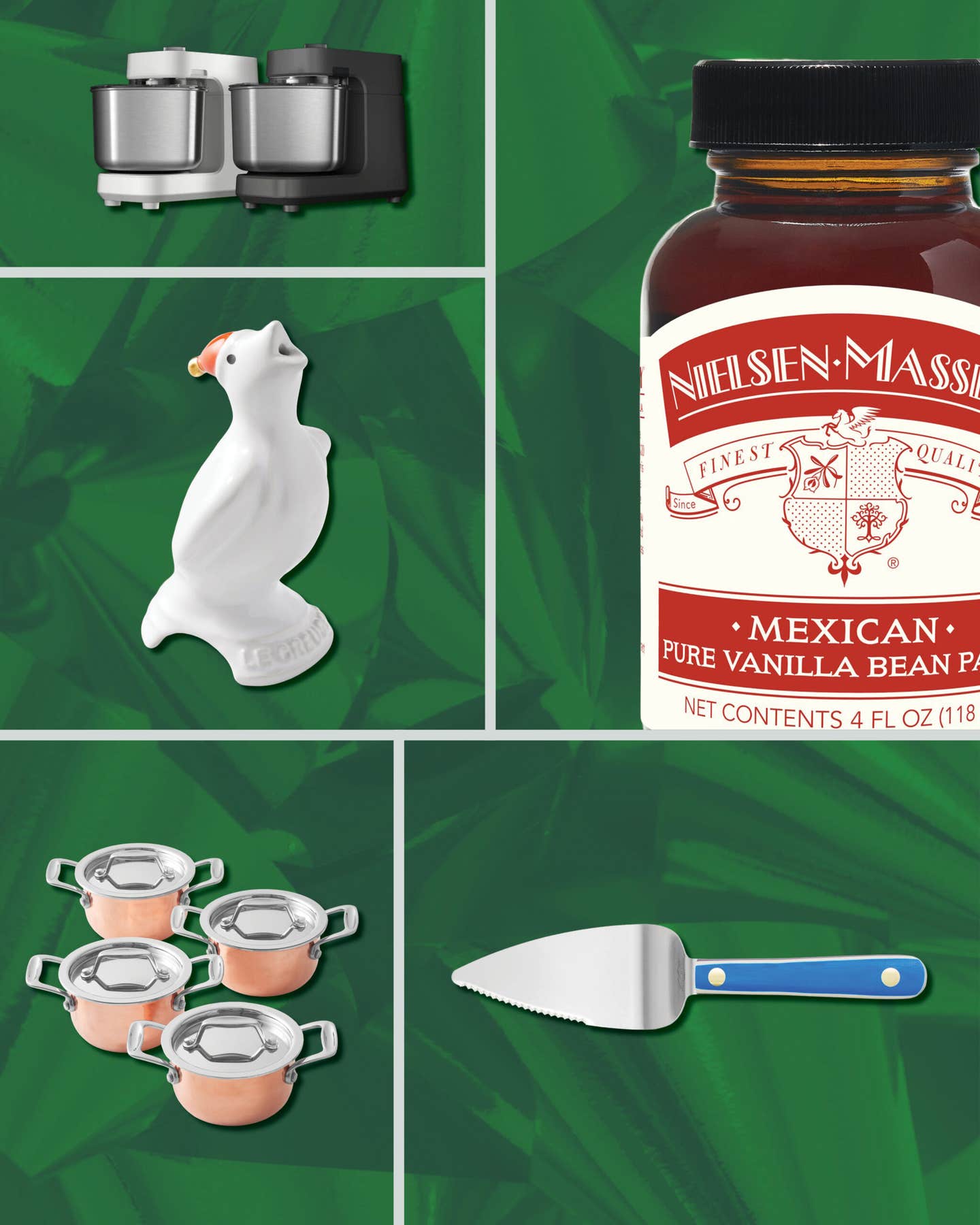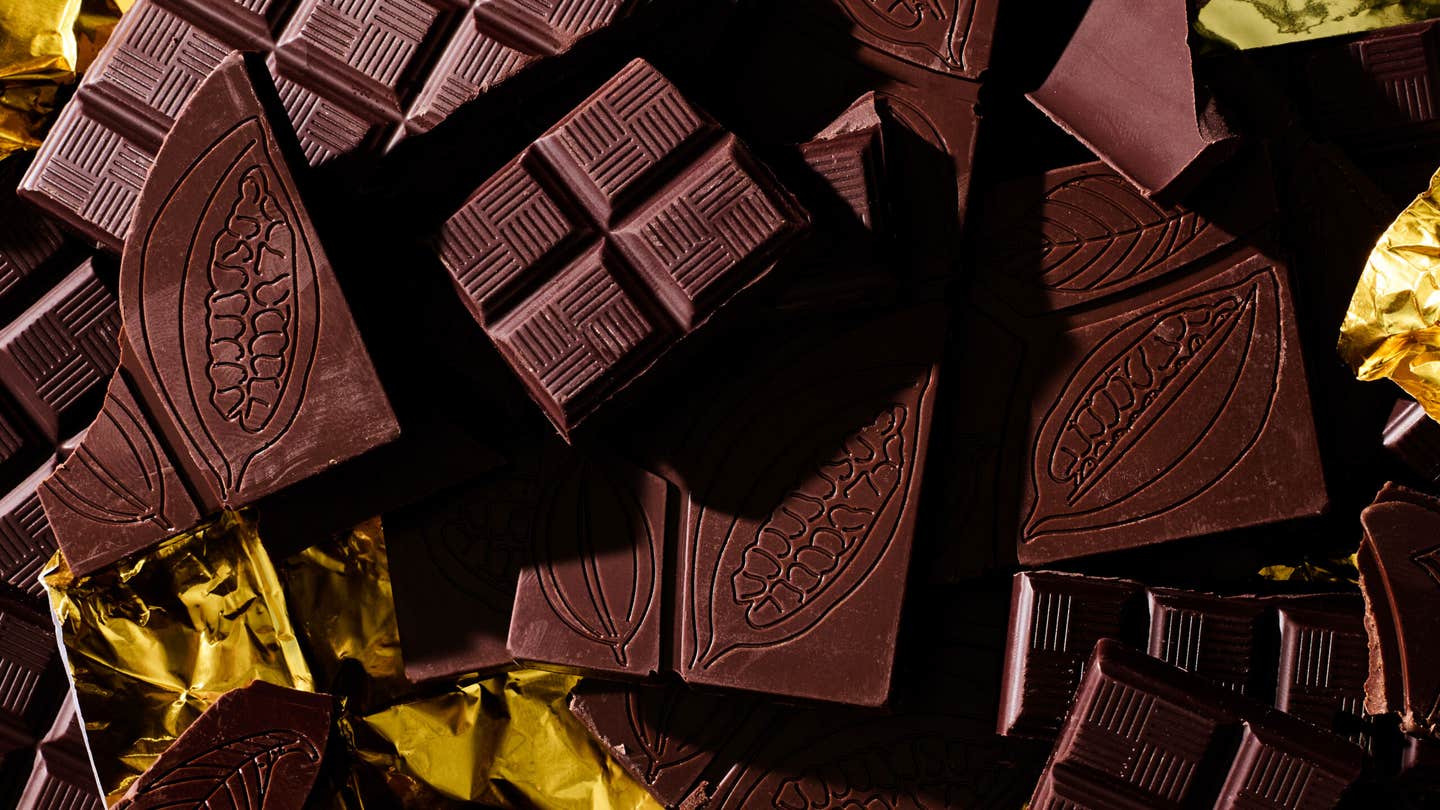The Best Peanut Butters Are So Good You Can Eat Them By the Spoonful
Slather them on toast, stir them into a sauce, or mix into a baked good, for good measure.
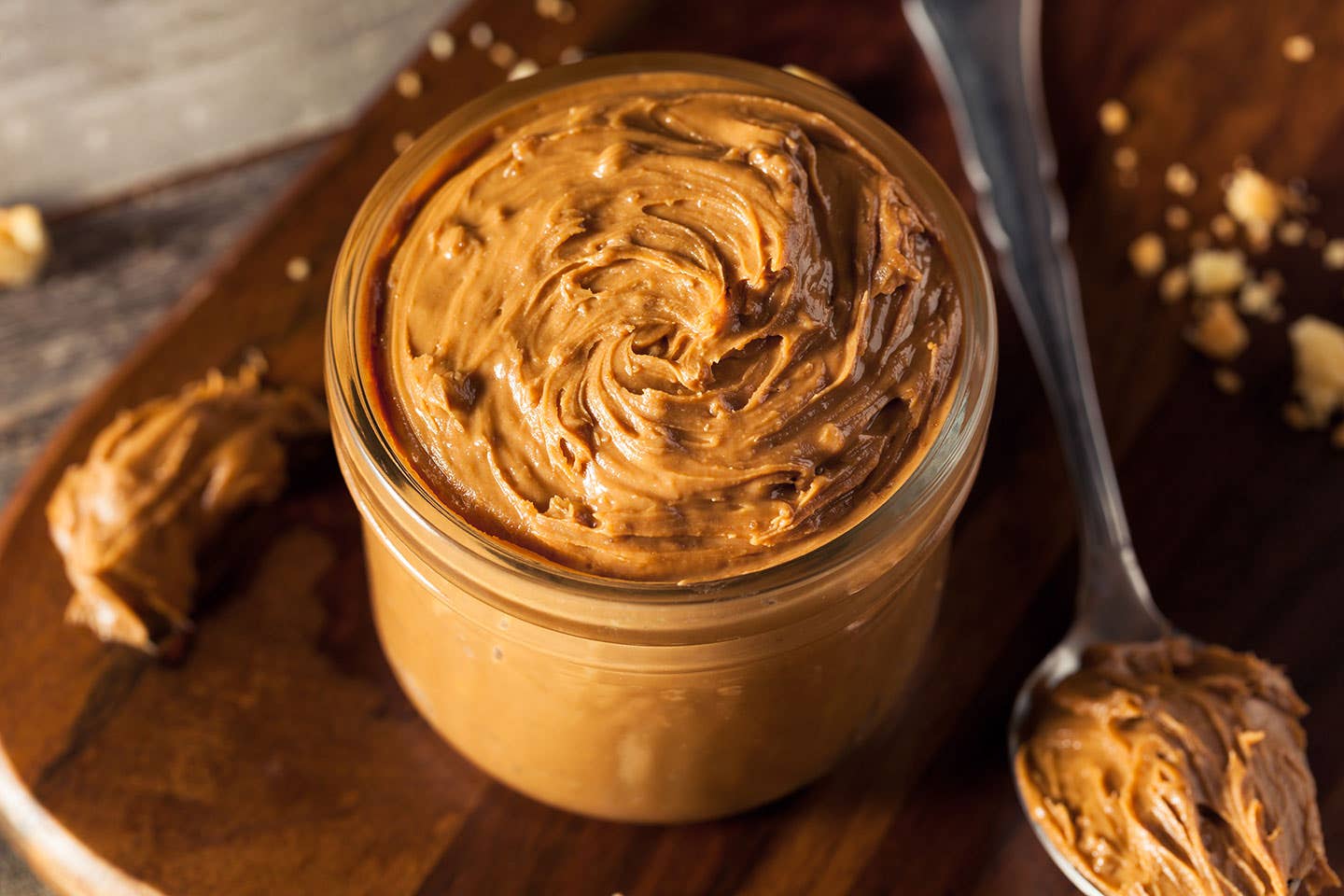
BHOFACK2/GETTY IMAGES
Peanut butter is one of those foods that has the power to evoke memories: peanut butter sandwiches at lunch, ants on a log for fun, dolloped on wedges of fresh apple as a snack, those classic cross-hatched peanut butter cookies for dessert, and of course, straight from the jar. It’s comfort food for many—which perhaps explains the increase in sales of peanut butter and peanut butter products during the pandemic.
So, when we began our search to find the best peanut butter, we started by recognizing that like it or not, most Americans had their taste buds trained early by options like Skippy, Jif, and Peter Pan. However, all of these market leaders contain some combination of not just peanuts, sugar, and salt, but also hydrogenated vegetable oil, an additive that’s been at the center of much dietary controversy for some time. So, we stepped up to the challenge of testing by finding peanut butters with the simplest ingredient profile possible.
Along the way we also found that defining “peanut butter” is trickier than it may seem. By legal definition, a product must be at least 90 percent peanuts to be labeled “peanut butter.” If that standard is not met, the product must be labeled “peanut butter spread.” Keep this in mind as we discuss what is—and isn’t—in our best peanut butters. The calculation offers some surprises.
Of course, peanut butters also come with or without added salt or sweeteners, or even with flavors and spices, but to get the purest test of peanut-y taste, we opted to look at only those peanut butters and spreads that contain no added sweeteners at all. Salt, yes, but no sweeteners. And, we tested creamy against creamy, no chunky styles, so that each spoonful was 100 percent nut butter.
To find our winners, we tested first for taste (on a plain cracker and by the spoonful), bake-ability (in flourless peanut butter cookies), in cooking (in peanut sauce), for ease of use (sometimes stirring is a must, but some blends are easier than others), and for spreadability. All of our winners are widely available across the country.
Our Top Picks
- Best Overall: Santa Cruz Dark Roasted Creamy Peanut Butter
- Best Value: 365 Organic Creamy Peanut Butter Spread
- Best Unsalted No-Stir: Justin’s Classic Peanut Butter Spread
- Best with No Added Ingredients (tie): Adams Natural Creamy Peanut Butter and Smucker’s Natural Creamy Peanut Butter
Best Overall: Santa Cruz Dark Roasted Creamy Peanut Butter
Best Overall
Style: Creamy | Sugar: None added | Salt: Yes, 55mg | Organic: Yes | Added ingredients: None | Size: 16 oz.
Pros
- Remarkably nutty peanut taste
- Organic
- Holds mixing well
Cons
- Need to stir
- Glass jar is breakable
Why we chose it: Simply the best peanut flavor and remarkable versatility in the kitchen.
Maybe it’s those “dark roasted” peanuts, but Santa Cruz is just the tastiest peanut butter out there that doesn’t contain any flavor boosters (and taste-bud trickers), such as salt, sugar, honey, etc. It just tastes and smells like peanuts, and something about the Santa Cruz blending process results in a peanut butter that remains better emulsified and less separated than most other natural styles.
That said, with all unadulterated peanut butters, there will be oil separation. Reduce the annoyance by keeping an Old-Fashioned Peanut Butter Mixer handy. The scant amount of space it takes up in the drawer is more than offset by the utility of this single-purpose gadget.
Santa Cruz even passed our kitchen tests. We chose a flourless peanut butter cookie to help ensure that most of the taste came from the peanut butter, and Santa Cruz peanut butter was fantastic. It makes a slightly puffier peanut butter cookie than you would get when using Jif or Skippy, and it even offered better flavor according to the cookie lovers we corralled into testing. Overall, the standout peanut taste is worth the marginally non-traditional cookie shape.
It was less oily than other natural brands in cooking, too. As a bonus, it’s consistently among the lower-priced organic options. Organic, almost nothing but peanuts, and reasonably priced. The slam-dunk of peanut butters.
Best Value: 365 Organic Creamy Peanut Butter Spread
Best Value
Style: Creamy | Sugar: No | Salt: Yes, 100 mg | Organic: Yes | Added ingredients: Palm oil | Size: 16 oz.
Pros
- Organic
- No stir
- Competitive pricing
Cons
- Palm oil
- Added salt
- Plastic packaging
Why we chose it: The flavor and consistency are like the peanut butters we remember from childhood, but it has all organic ingredients and is consistently lower priced than other organics.
If a bit of palm oil is not among your concerns, and salt isn’t an issue, then this 365 Organic Creamy Peanut Butter Spread ticks enough boxes to be considered among the best of the bunch in taste and in spreadability. It has a clean peanut flavor, spreads well, and needs no stirring. And it bakes identically to the hydrogenated peanut butters in those peanut butter cookies.
Best Unsalted No-Stir: Justin’s Classic Peanut Butter Spread
Best Unsalted No-Stir
Style: Creamy | Sugar: No | Salt: None added, 25 mg naturally occurring in the peanuts | Organic: No | Added ingredients: Palm oil | Size: 16 oz.
Pros
- No stir
- Nice peanut taste
- Spreadable
Cons
- A bit oily
- No longer a “homemade” brand
- More expensive than similar brands
Why we chose it: Spreads like a dream and tastes much like the peanut butters of kid-dom, despite the lack of added sugar or salt.
Justin’s broke into the peanut butter market when Justin Gold ground up peanuts in his Colorado kitchen. He realized he’d hit upon something when he made peanut butter super-portable by putting it in squeeze packs. From there, he expanded into flavors, other nut butters, and snacks.
Though there are sweetened versions of Justin’s peanut butter, this plain, creamy style is great as-is and needs no stirring. It has a nice, simple, natural, peanut-by flavor and It baked a cookie very similar to what you’d get using one of the leading brands, and is only the least bit oily in cooking, something you can offset by dialing back any other oils in the recipe by just a tad.
The company is now owned by Hormel Foods, which is also parent to other brands that avid snackers may recognize, such as Planters, SPAM, Applegate—and Skippy. But Justin’s is made on different manufacturing lines and is deemed a “spread” because it contains less than 90 percent peanuts.
Best with Added Salt (tie): Adams Natural Creamy Peanut Butter and Smucker’s Natural Creamy Peanut Butter
Best with Added Salt (tie)
Best with Added Salt (tie)
Style: Creamy | Sugar: No | Salt: Yes, moderate (95 mg and 110 mg sodium, respectively) | Organic: No | Added ingredients: None | Size: 16 oz.
Pros
- Light salt brings out peanut flavor
- Pleasant peanut flavor
Cons
- Not organic
- Needs stirring
Why we chose it: Both with just a bit of salt, these two natural peanut butters come through on taste without adding much of anything.
These are a tie for two reasons. First, they are both made by Smucker’s, with the Adams brand having been acquired in 1998, and the two peanut butters are almost indistinguishable in taste testing. (Smucker’s also makes Jif, so they're an old hand in the peanut butter game.) Second, they’re both pretty good, though not as flavorful as our Best Overall. Neither is organic, and the Smucker’s, in particular, has enough added salt to tip it at 110mg of sodium per serving—still less than the leading brands, which have 140mg (Jif) and 150mg (Skippy). They do require stirring, but both jars accept the paddle mixer and stay fairly well mixed if you do the jar-flip trick (below).
Runners-Up / Others We Tested
Style: Creamy | Sugar: Yes, 2g added | Salt: Yes, 140 mg sodium | Organic: No | Added ingredients: Molasses, fully hydrogenated vegetable oil (rapeseed and soybean), mono- and diglycerides | Size: 16 oz.
Style: Creamy | Sugar: Yes, 3g added | Salt: Yes, 150 mg sodium | Organic: No | Added ingredients: Hydrogenated vegetable oil (cottonseed, soybean, and rapeseed) | Size: 16 oz.
Pros
- Familiar taste
- Better results in some cooking and baking
Cons
- Hydrogenated oils
- Not organic
- Lots of salt and sugar added
Why we chose them: These two served as our controls, based on the expectations that have been built around peanut butters over the decades.
While the taste is undeniably familiar as “peanut butter,” each packs a lot of extra salt and added sugar. Side-by side you can taste the difference between them, probably as a result of that extra molasses in the Jif. They lose out because alongside the other nut butters, they just don’t taste as peanut-y. Their taste is strong, but it’s a trick played on the taste buds by the salt and sugar, and perhaps by memory as well.
What really kills these two is that hydrogenated vegetable oil. Granted, by definition it is less than 10 percent of the product (exact percentages of ingredients are not listed on nutrition labels, only their ascendancy), but for all the damage that hydrogenated oils can do in the diet, you might want to avoid them.
Style: Creamy | Sugar: No | Salt: Yes, 105 mg | Organic: Yes | Added ingredients: None | Size: 16 oz.
Pros
- Widely available in U.S. supermarkets
- Spreadable once mixed
Cons
- Really oily
- Needs mixing
- Plastic packaging
Why we chose it: O Organics is a brand of peanut butter that is widely available in many grocery stores and it promises organic quality.
O Organics is a private label of the Albertsons Companies, which are many, so it shows up in supermarkets all around the country, including Safeway, Shaw’s, etc. It’s the only peanut butter we tested that was a product of Canada, but that’s not what tips it out of favor. Its taste isn’t peanut-y enough, really, and it’s incredibly oily, which is made worse by the fact that it’s in a plastic jar that will not accept a peanut butter mixer. It wasn’t as tasty as our Best Overall, and it was nearly 50 percent more expensive than our Best Budget choice, which was organic to boot.
Style: Creamy | Sugar: No | Salt: No, 10 mg naturally occurring in the peanuts | Organic: Yes | Added ingredients: Palm oil | Size: 16 oz.
Pros
- Legacy natural foods manufacturer
- Glass packaging
- Organic
Cons
- Unremarkable taste
- Higher price point
- Needs mixing
Why we chose it: Great brand, but taste falls far short of other organics while still commanding premium pricing.
MaraNatha is another peanut butter with homemade origins, this time from Robert and Chris Plotnik in Ashland, Oregon. It’s now a brand of Hain Celestial Foods, a reliable and ubiquitous brand for many product types in the world of natural foods. But for all its pedigree, it’s just not as flavorful as it should be, and while packaged nicely in glass, the jar has a smaller mouth, so it’s tougher to stir.
Style: Creamy | Sugar: No | Salt: Yes, 100 mg | Organic: No | Added ingredients: Palm oil | Size: 16 oz.
Pros
- No stir
- Spreads easily
Cons
- Unremarkable taste
- Lots of added salt
Why we chose it: Just not the best of the butters, and at a higher price point than similar blends.
Somehow, this mix of peanut butter and palm oil comes out more pasty than other butters, and it doesn’t have a really nice peanut taste. The flavor is somehow submerged. It’s a bit less expensive than Justin’s, which is a similar blend and one of our top choices, but Peanut Butter & Co. is just not as flavorful despite having four times as much salt.
How We Chose These Products
We looked for a selection of readily available brands, those you’re likely to find no matter where you are in the U.S. This was a bit dicey because current supply-chain issues in retail and agriculture are distorting product availability, but we cross-checked stock in Whole Foods and Safeway markets—both national retailers—and online. These are the best and most-readily available brands, though we did not include local or artisanal manufacturers.
We included two of the old-school brands, Jif and Skippy, specifically as a baseline, albeit a dubious one because so many of us would prefer to avoid some of the very ingredients that give those 20th-century standard bearers of the peanut butter world their distinctive tastes, creaminess, spreadability, and shelf stability.
We checked everything in direct taste testing by the spoonful, on super-plain water crackers, and in recipes as well: Flourless Peanut Butter Cookies and, in the realm of peanut butter for dinner, Cold Sesame Noodles. We specifically chose two peanut-intensive recipes so that the comparison was based as much on the peanut butter as possible. The peanut butter was nearly on its own in the cookies, not interrupted by flour and any fluctuation of moisture content, and all the other ingredients and kitchen factors were exactly the same from test batch to test batch. In the noodles, we kept the other ingredients the same with each test as well. Here’s where we learned that if a peanut butter needs stirring in the jar, you absolutely must be sure it is well mixed before measuring and adding it to the peanut sauce. Then you have to be sure you’re not making the sauce too oily in its final form. We added the sesame oil to the peanut sauce last, and dialed it back as necessary.
Features to Keep in Mind When Shopping for a Peanut Butter
Added Ingredients, Salt, Sweeteners, and Other
Salt and sugar—in moderation—are culinary friends, not foes. They act to uncover and intensify many flavors in cooking, and that’s true in peanut butter as well. A bit of salt and a bit of sugar in the right balance can bring out elements of the peanut flavor profile. But if you are watching your intake of either salt or sugar, read the labels, because some peanut butter brands pack a wallop of one or the other, especially those that don’t even aspire to be “natural”. Routine exposure to an excess of salts or sugars can train your tastebuds to expect those flavor peaks, too, and you might lose your taste for more subtle flavors. Plus, we have found that if you have a full-flavored peanut-y peanut butter, it doesn’t need the add-ins.
Oils are another matter, and we won’t delve deeply here into the relative risks and values of such additives to peanut butters or other foods; that’s a huge and fraught subject of its own. But in terms of added oil, know that the peanut butters you find on U.S. grocery shelves these days will come in one of three different configurations: with added hydrogenated oils, with added palm oil, or with no added oil at all. We sampled each type for eating, baking, and cooking, in the most peanut-butter-dependent recipes possible.
Here’s where we get into the relative “value” of additives. A peanut butter that is just peanuts will quickly separate when it sits, leaving an oil layer on top. The naturally occurring oils in the peanuts themselves just don’t stay mixed, so we have to stir. That can be a pain, and it’s an incredible mess if you’re unfortunate enough to slop peanut oil all over the place when mixing or opening the jar. (Been there, done that, right?)
So, for even the best peanut butters to stay blended, manufacturers need to add something that supports and maintains emulsification, and that’s usually some sort of vegetable oil. Those old favorites, Jif and Skippy use hydrogenated vegetable oils. (Jif even adds mono- and diglycerides.)
But as consumers have reacted with concern to hydrogenated oils in packaged foods, peanut butter manufacturers have had to find something else that helps the peanut butter stay mixed. For that, they have turned primarily to palm oil, which is, well, a whole other can of oil, so to speak.
There are health arguments both for and against palm oil, and much discussion of the environmental impact of its harvesting. These are important considerations, but for purposes of our comparisons here, what you need to know is that virtually all the no-stir brands that avoid hydrogenated oils will contain palm oil.
Then there’s the labeling. It takes a greater percentage of palm oil to do what a lesser amount of hydrogenated oil can do in terms of emulsification, more than 10 percent of the total volume, in fact. So, that tips the “90 percent peanuts” rule in labeling, the end result being that most peanut butters using palm oil as an emulsifier have to be labeled “peanut butter spreads.” We found that the palm oil doesn’t make peanut butter any more (or less) flavorful or useful, but keep that added oil in mind when making your choice.
Organic
Organic peanut butters take up about half the shelf space at the grocery store, and organic comes at a premium; they are almost always more expensive than those made from non-organic peanuts. However, many manufacturers of peanut butter do go out of their way to offer products that are made from non-GMO peanuts. While that seems like a step in a better direction for some, 100 percent organic is even better still. Peanut cultivation is fairly chemically intensive, and even though peanuts are legumes that form underground in the soil, that doesn’t protect them from exposure to agricultural chemicals.
Ask the Experts
Q: Should dogs eat peanut butter?
In general, peanut butter is ok for dogs, according to the American Kennel Club. It’s always best to check with your vet about what your own dog can and should eat, but also use common sense. Even natural or homemade peanut butter is very high in fat, and certain commercial brands can be full of salt and sugars. Humans don’t need to overload on any of that, so apply the same healthful standards for your dog. But as an occasional treat (apply the 10 percent treats rule as suggested by the AKC), a little bit of peanut butter can make a dog a very happy camper.
Q: Does peanut butter have an expiration date?
All packaged foods will have an expiration date, and the food industry is working to make the various terminology—“best by” “best if used by” “use before” “sell by”—less confusing overall. But the thing to keep in mind is that most of these dates aren’t about spoilage; they are mostly about optimal quality, and even then there’s much wiggle room, especially for a food product that is fairly stable while still in sealed packaging, such as peanut butter. A week-old open container of yogurt or lumpy milk is another matter, as is a jar of peanut butter that’s been open for months and months and is past its “use” date. Once again, common sense goes a long way.
Q: Should I keep my peanut butter in the fridge?
Follow the label recommendations. That said, with all unadulterated peanut butters, there will be oil separation. Grab the Old-Fashioned Peanut Butter Mixer. It can be used for tidily mixing any nut butter in a jar that accepts a standard 75mm lid. You can remix each time you use the peanut butter, or you can stay ahead of the game by paddling the butter at room temperature when you first open it, then sealing the lid tightly and inverting the jar for storage, which means you’ll be greeted by mostly peanut butter when you flip it over the next time the jar is opened. Refrigerate if the label says to, and any peanut butter can be kept in the fridge, but you’ll want to mix it at room temperature.
Q: Can I make my own peanut butter?
We’ve sort of come full circle on the peanut butter track. Way back when, peanut butter was only what you might throw together at home: just peanuts ground into a paste. But, with the midcentury explosion in the market for packaged foods, manufacturers were exploring all sorts of additives to make peanut butters tastier and more attractive, including glycerin, and lots of stuff started making its way into peanut butter, primarily salt, sweeteners, and oil additives. Concerns about nutritional value of our foods and food additives came to the forefront again in the 1970s, and that’s when, once again, we started seeing peanut butters made from just peanuts.
Making nut butters at home can be messy, but a food processor or powerful blender (such as a Vitamix) can make quick work of it, and you can even experiment with adding small amounts of oil or flavors to make your own special blends. The next best thing to homemade is peanut butter ground at the store, but our Best Overall, Santa Cruz Dark Roasted Creamy Peanut Butter, comes darn close to freshly-ground and is much more convenient.
Our Take
Depending on what you’re looking for a in a peanut butter—whether you prefer salty, low-sugar, organic, or a creamy, childhood favorite—everyone is looking for the same thing: a nutty, rich, peanut taste. We’ve chosen the best, widely-available peanut butters that will take you from a late night spoonful to a fluffy batch of peanut butter cookies.
Keep Reading
Continue to Next Story
